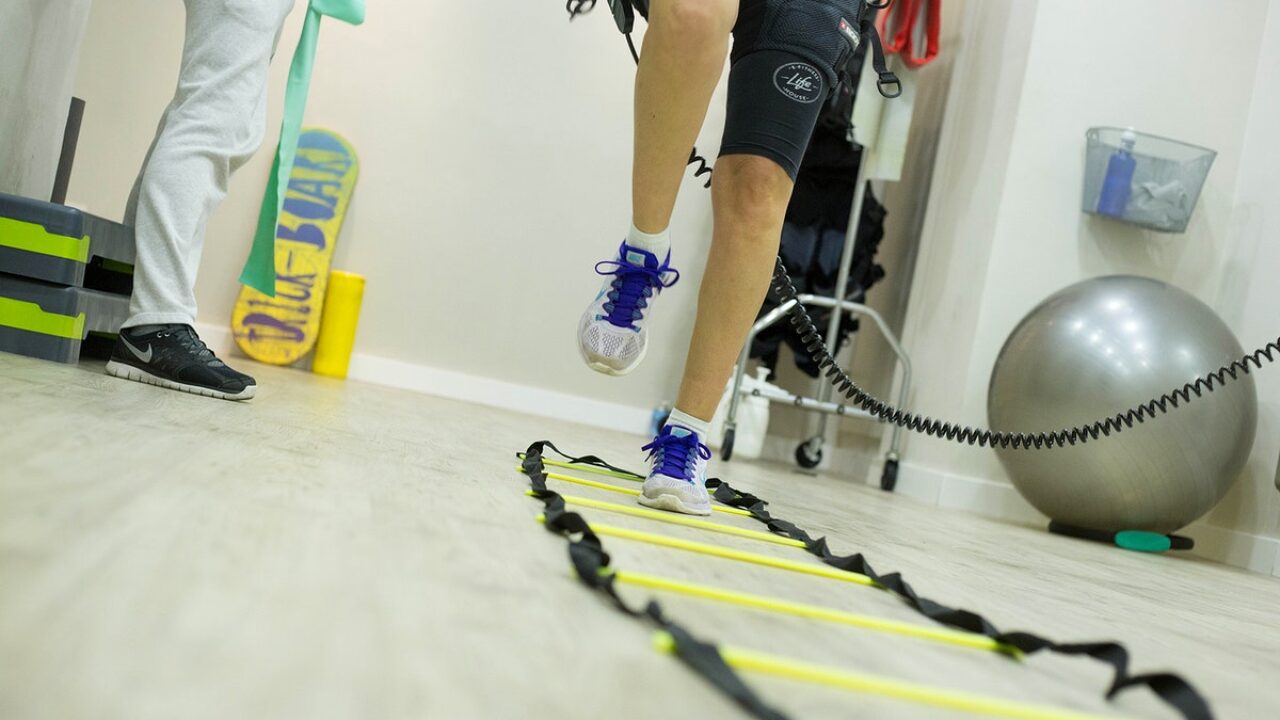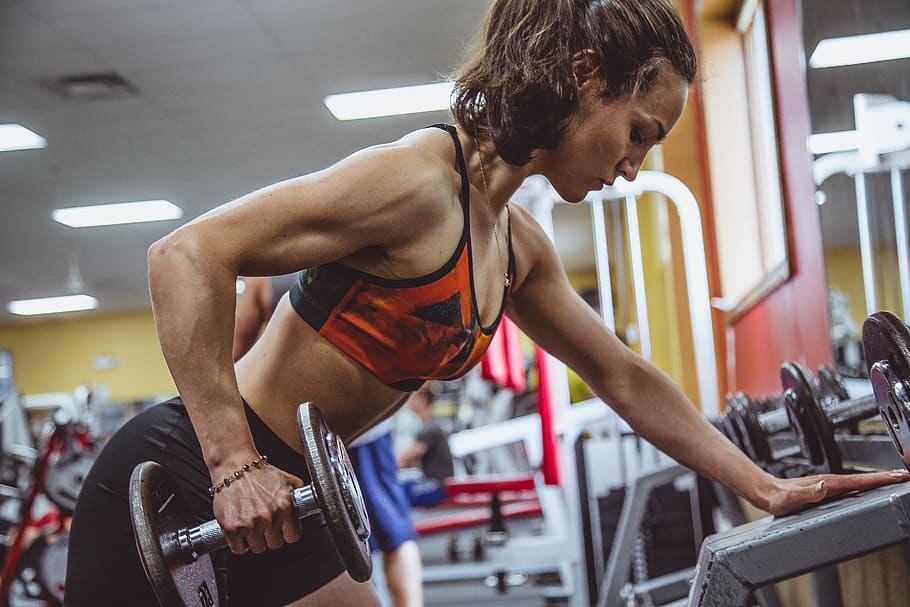
Fitness 101: Breaking Down the Components
Exercise is an important part of a healthy lifestyle, but it isn’t always easy to know where to start. From weights to bodyweight exercises, cardio to HIIT, it can all be overwhelming. Fortunately, getting started is easier than you think! In this article, we’ll break down the basics of fitness and explore each component so you can start building your own fitness routine. Read on to learn the fundamentals of fitness and get your body moving!
List of Content
- 1. What is Fitness?
- 2. Cardio Exercise for Optimal Fitness
- 3. Weight Training for Strength
- 4. Stretching for Flexibility
- 5. Nutrition for Sustaining Fitness
- 6. Setting Realistic Fitness Goals
- My Awnswers to your Questions
1. What is Fitness?
Fitness is a general state of good physical health, conditioning, and strength. It involves maintaining a healthy diet, exercising regularly, and managing stress. It is important for overall physical and mental health, as well as for preventing chronic health conditions. Here are some important aspects of fitness:
- Nutrition: Eating a balanced diet with the right amounts of protein, fats and carbohydrates, as well as getting adequate amounts of vitamins and minerals.
- Exercise: Regular activity and exercise, including aerobic exercise, resistance training, and stretching.
- Stress Management: Learning how to manage stress in your life. This may include relaxation techniques, counseling, and yoga.
- Rest and Recovery: Getting adequate rest and recovery time to allow your body to repair and rejuvenate.
Fitness is not just about physical health; it also involves mental health and overall wellbeing. Achieving and maintaining good fitness can help improve your mood and mental health, as well as increase your energy level. It can also help boost productivity and creativity, and can even help reduce the risk of developing chronic health conditions.
It is important to remember that fitness is not a destination, but rather a process. It is important to set achievable fitness goals and to focus on progress over perfection. With the right combination of nutrition, exercise, rest and recovery, and stress management, you can reach your fitness goals and maintain an overall healthy lifestyle.

2. Cardio Exercise for Optimal Fitness
Performing cardiovascular exercise regularly is essential for achieving optimal fitness. Cardio activities increase your heart rate and can burn tons of calories. Not only does it get your heart and lungs working, but it also helps to improve your metabolism and can burn fat around your midsection. Plus, it helps to improve your endurance and stamina.
High Intensity Interval Training (HIIT) is a great type of cardio exercise that you can do to ramp up your fitness level even more. HIIT involves performing short bursts of intense activity (like sprinting) and then resting a bit in between sets. It’s a great way to get the most out of your workout in a shorter amount of time.
Running on a treadmill is another great way to give your heart a good workout. Treadmills are great for cardio because you can adjust the speed and incline to challenge yourself. You can also change your running program to help you focus on different aspects of your cardio.
Outdoor cardio activities such as cycling, jogging, or swimming are all great options for getting your heart rate up and staying fit. Being outdoors is also the perfect way to mix up your cardio routine and challenge your body in different ways. Plus, outdoor activities also have the added bonus of getting you some fresh air and much needed vitamin D.
3. Weight Training for Strength
Benefits of Weight Training
Weight training can provide many physical and mental health benefits. People who use weight training may experience:
- Increased muscle strength
- Improved bone health
- Weight loss
- Improved posture
- Reduced anxiety and stress
- Reduced risk of chronic diseases
Age Suitability
The great thing about weight training is that it can be used by people of any age. It is particularly beneficial for older people as it promotes strong bones which is important for general health and can help to reduce the risk of falls. Those with medical conditions can benefit too, as long as they have consulted a medical professional and it is recommended by them.
Progression of Weight Training
When completing a weight training program, the amount of weight used and number of repetitions should increase over time to keep challenging the muscles. Increasing the resistance, number of sets and rest time are all key points to progress your workout. As muscles become stronger, the number of repetitions may need to be reduced because of the extra weight used.
Safety
Safety is always of utmost importance when using weights. It is important to use the correct form and to make sure that the weight being used is not too heavy for your own strength. Take your time, breathe slow and steady and make sure to warm up and stretch well beforehand. If there are any exercises that you’re having trouble with, stop and consult an expert for guidance.
4. Stretching for Flexibility
Yoga
Yoga is an excellent way to increase your flexibility. Poses like sivasana, cobra, pigeon, and tree can be held for several minutes and, after getting the hang of them, can be done almost anywhere. Try to aim for at least 30 minutes of yoga per week.
Dynamics Stretches
Dynamic stretching uses movements to stretch the muscles. Think of stretches like high kicks, butt kicks, arm circles, and lunges. If you ever wanted to become a human pretzel, dynamic stretching can be tailored to your specific needs.
Ballistic Stretches
Ballistic stretching is the most intense and the quickest way to stretch any muscle. It involves bouncing movements, and it should only be done with caution. The force generated by the bouncing movement can cause a muscle to contract too quickly for it to adjust in time, resulting in strains.
Static Stretches
Static stretches are nice and slow. Unlike ballistic stretching, static stretching involves the muscle being gradually stretched to the point of tension and held for several seconds. The benefits of static stretching include reduced soreness, increased range of motion, improved posture, and a decrease in the risk of injury.
5. Nutrition for Sustaining Fitness
A Healthy Diet is Essential
In order to maintain a healthy lifestyle, it is important to follow a well-rounded diet that meets your caloric needs. A good diet includes a balance of carbohydrates, proteins, and fats that you will need to support your physical activity. For individuals who are physically active, diets should include more nutrients like proteins, carbohydrates, and healthy fats. You should also drink plenty of water to stay hydrated during physical activity!
Maximizing Energy Levels
Eating the right combination of foods can provide your body with the energy necessary to sustain physical activity. Eating healthy foods such as fruits, vegetables, lean proteins, and whole grains will help to provide your body with the energy needed to perform optimally. It is also important to incorporate foods that supply the body with essential vitamins and minerals to help fortify immunity and improve overall health.
Timing is Everything
Timing your meals strategically can also help to maximize energy levels and performance. Eating a meal two to three hours before engaging in physical activity will ensure that you are not feeling hungry while also allowing your body to process and digest the food properly. After exercising, your body needs replenishment, so having a nutritious meal within 30 minutes of finishing your physical activity can help to restore energy levels and prevent fatigue.
The Speed of Digestion
The speed of digestion is another important factor to consider when trying to sustain your fitness. Eating foods that are digested faster, such as simple carbohydrates, right before engaging in physical activity can help to maximize energy levels and performance. However, after completing physical activity, eating foods that are digested slower, such as complex carbohydrates and proteins, will help to restore muscle stores and rebuild and repair muscles.
6. Setting Realistic Fitness Goals
Setting fitness goals is important to help you stay motivated and focused on your fitness routine. It’s important for your goals to be realistic so that you stay committed and don’t get discouraged.
To make sure that your fitness goals are realistic, there are some steps that you should take:
- Set Specific Goals: Make sure your goals are precise and not vague. For example, “I want to get fit” is too vague, while “I want to lose 8 lbs in a month” is very specific.
- Track Progress: Keep track of the progress you’re making towards your goals. This can be done by noting down your activities, tracking your progress, and making changes to your routine if it’s not getting the desired results.
Break down your goals into several short-term goals that are more achievable. This will encourage you to work hard and reach your ultimate goal. Moreover, don’t be afraid to modify your goals as you progress, as your body and energy levels may not be the same throughout your journey.
Finally, don’t forget to reward yourself every time you reach a milestone. Whether it’s a new fitness gear or a day off from the gym, you should always stay motivated and focused on your goals.
My Awnswers to your Questions
Q: What does fitness include?
A: Fitness includes several components, such as aerobic activity, strength training, flexibility, and balance.
Q: Are all of these components important for overall fitness?
A: Yes! All of these components are important for achieving good overall fitness. Strength training in particular helps to build muscle mass, and aerobic activity helps to improve heart health. Flexibility and balance exercises are also important for improving agility and preventing injury.
Q: What kind of exercises should I do for each component of fitness?
A: For aerobic activity, you can do any kind of cardiovascular exercise such as running, swimming, or cycling. For strength training, you can use free weights, resistance bands, or machines. Flexibility exercises can involve stretching, yoga, and Pilates, and balance exercises can include activities like standing on one foot or standing with one leg lifted.
Well, there you have it! With the right knowledge and guidance, you can easily break down the components of fitness and create a plan that works best for you. Don’t get overwhelmed by all the options and instead take it one step at a time. You’ll be on your way to a healthier lifestyle in no time!
